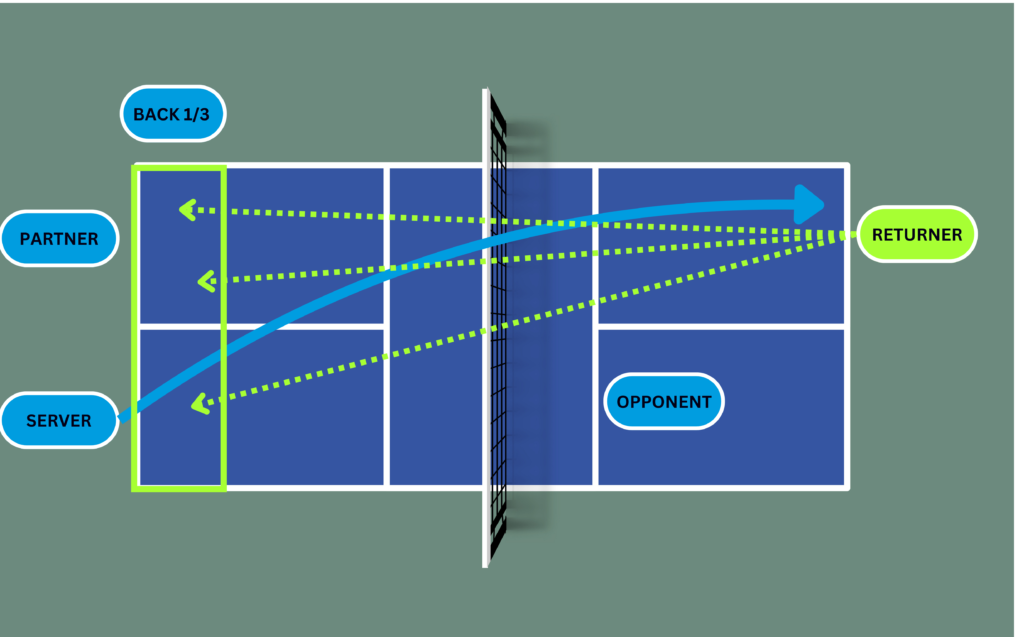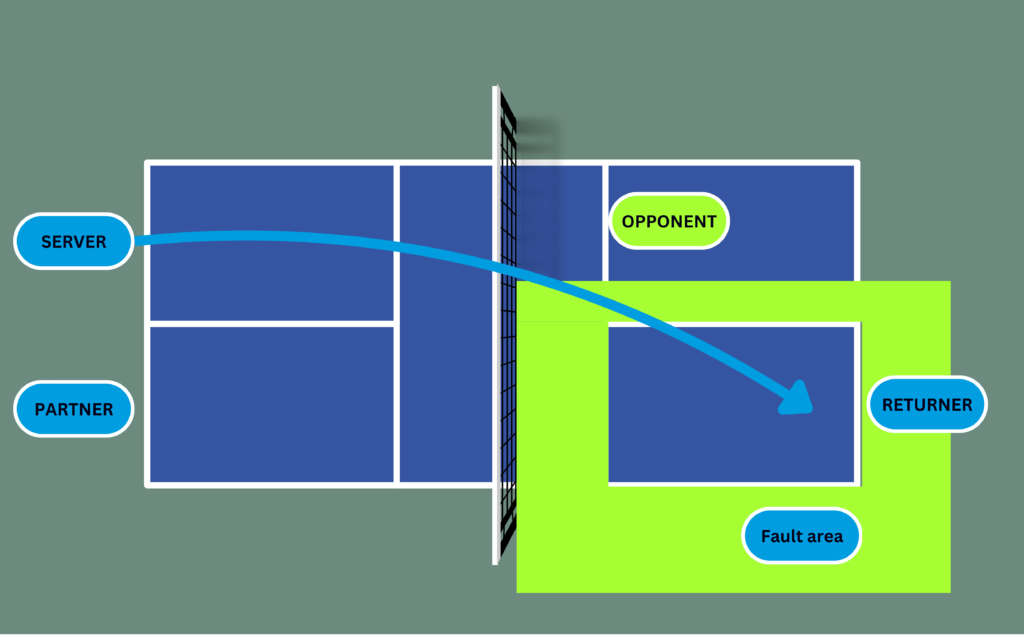the RETURN
PART I
Mastering the Return: Unlocking Offensive Opportunities in Pickleball
Welcome back to our pickleball journey, where every serve, return, and rally brings us closer to mastering the game. Today, we’re diving into the second key fundamental: the return of serve. Just as the serve sets the stage, the return of serve holds the power to shift the momentum of the game in your favor—or send you scrambling into a defensive position.
PART II
Seizing the Offensive: Responsibilities of the Returner
Receiving the serve isn’t just about defense; it’s about seizing the offensive advantage. How you execute your return determines whether you’ll maintain control of the point (offense) or find yourself on the defensive.
As the player tasked with returning the serve for your team, your mission is clear: position yourself diagonally opposite from the server and let the ball bounce before hitting it back. With each return of serve, you have the choice to send it back to anywhere on the court over the net. That means you can return it to the server, their partner or even into the kitchen (not recommended), keeping them on their toes and off balance. But here’s where strategy comes into play. Aim to direct your return to the back third of your opponent’s court, applying pressure and setting the stage for your next move.
By returning it deep, you will make it a more difficult next shot for them since they are further from the net and also provide you more time to achieve Your #1 objective of advancing to the NVL (Kitchen Line). Positioned at the net, it allows you more time to react to their next shot and you’re ready to pounce on any weak 3rd shot returns from your opponent and keep the pressure on them.

Part III
Courtside Support: Role of the Non-Returning Player
Now, what about your teammate who’s not returning the serve? They absolutely play a crucial role in the process. Positioned anywhere on your side of the court, preferably behind the NVL, their focus shifts to monitoring the serve. Their job? Ensure the serve lands within bounds, trying to take the serve away from the opponent whenever possible. Remember that the person serving only gets to continue serving as long as they get the serve inbounds and get a point so this is a way to potentially end their serve. If it strays outside the baseline or sidelines, or if it makes contact on or in front of the NVL, they signal to both teammate and opponents that it’s out, and that ends that servers turn.

Remember, in pickleball, precision is key. All lines are considered in, except for the NVL, which is out only during the serve. And if the ball grazes the net on the serve, play continues as if it hadn’t—what matters is where it lands afterward. So, as you step up to receive the serve, embrace the opportunity to seize control of the game. Return the ball and race toward that kitchen line to join your teammate already there — time to play!

